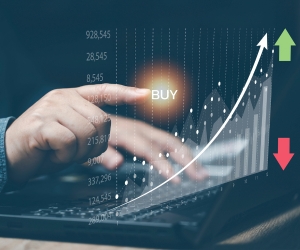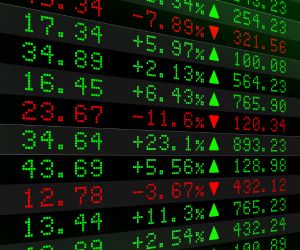This guide delves into the essential aspects of trading the IBEX 35, from understanding the index to exploring various trading strategies. Discover why the IBEX 35 is a cornerstone in many investment portfolios due to its diversification and liquidity benefits. Learn advanced techniques such as leverage, pair trading, and algorithmic trading to enhance your trading. We also cover essential tools and resources, including research platforms, educational materials, and trader communities to keep you informed and connected. Additionally, our guide emphasizes the importance of emotional control, robust risk management, and continuous learning to successfully navigate market complexities. Finally, we offer practical insights to guide you in creating a detailed trading plan and leveraging technology to refine your strategies. Dive in to equip yourself with the knowledge and tools necessary to successfully trade the IBEX 35.

How to Trade the IBEX 35 Index
The IBEX 35 is Spain's main stock index, comprising the 35 most liquid companies listed on the Madrid Stock Exchange. It represents the performance of the Spanish economy and is influenced by key sectors such as banking, telecommunications, energy, and consumer goods. Its liquidity and volatility make it attractive for both long-term investors and active traders looking to capitalize on its daily movements.
Characteristics of the IBEX 35 in Trading
High Liquidity: It is Spain's benchmark index and one of the most traded in Europe.
Moderate Volatility: Its movements depend on the Spanish economy, the European context, and decisions of the European Central Bank (ECB).
Correlation with Europe: It is influenced by the German DAX, the French CAC 40, and EU policies.
Trading Hours: It trades during European market hours, with high-activity sessions at the opening and closing.
Instruments to Trade the IBEX 35
IBEX 35 Futures: Traded on the MEFF (Spanish Financial Futures Market) and allow for leveraged trading.
CFDs on the IBEX 35: An alternative for retail traders seeking to trade on margin.
IBEX 35 ETFs: Exchange-traded funds that replicate the index's performance.
Options on the IBEX 35: Derivative instruments for hedging and speculation strategies.
Trading Strategies for the IBEX 35
1. Trading at the European Open
The IBEX 35 often experiences sharp movements in the first hour of trading due to reactions to macroeconomic news and opening data from European markets.
Opening Breakout: Trade the breakout of the initial range to take advantage of impulsive movements.
Scalping: A quick strategy based on the volatility of the first minutes of the market.
2. Trend Following Strategy
The IBEX 35 tends to form clear trends, especially based on European market sentiment.
Moving Averages (50 and 200): Crossovers help identify bullish and bearish trends.
MACD: Trend confirmation to validate buy or sell signals.
3. Trading on Support and Resistance Zones
The IBEX 35 often respects key levels that can be used for trading bounces or breakouts.
Fibonacci: Identify retracements after strong moves.
Supports and Resistances: Detect strategic entry or exit points.
4. Influence of News and Monetary Policies
The IBEX 35 reacts to global economic events and decisions by the European Central Bank.
ECB Meetings: Interest rate changes affect the index.
Employment and GDP Data: Key economic reports can generate volatility.
Political Factors: Instability in Spain or the EU can impact the index.
Risk Management When Trading the IBEX 35
Use of Stop-Loss: Protect capital against adverse movements.
Leverage Control: Avoid excessive exposure in high-risk trades.
Monitoring Key News: Stay informed about relevant macroeconomic events.
Trader Discipline and Psychology: Avoid impulsive trading and adhere to the established strategy.
SWOT Analysis of the IBEX 35 as an Index
This SWOT analysis evaluates the IBEX 35, Spain's main stock index, considering the interaction between the performance of leading companies and the local economic situation, characterized by growth challenges and political uncertainty.
Strengths:
Concentration of leading companies: The IBEX 35 groups Spain's leading companies, offering a representative view of the business sector.
Integration with the European market: EU membership provides stability and access to a broad financial market.
Weaknesses:
Slow economic growth: The Spanish economy has shown moderate growth, limiting the index's appreciation potential.
Political uncertainty: Internal factors and political changes, such as tensions around regional independence, can generate volatility.
Opportunities:
Structural reforms: Measures to boost the economy and labor market reforms can strengthen the IBEX 35.
Foreign investment: Increased capital investment in Spain and Europe can drive the index's growth.
Threats:
Geopolitical instability: International crises and tensions in Europe can affect investor confidence in the IBEX 35.
Competition from other markets: The strengthening of the dollar and euro, as well as competition from emerging markets, can shift investor interest.
What is an International Stock Broker?
An International Stock Broker is the entity (or platform) that allows you to buy and sell shares of companies listed on stock exchanges in different countries around the world. Unlike a local brokerage firm, the main focus of International Brokers is to offer access to global markets, such as the United States, Europe, or Asia.
Why do we need an International Stock Broker?
Investing in international stocks can be an excellent way to diversify your portfolio, providing the opportunity to participate in the growth of economies and sectors worldwide. However, trading in global markets is not as simple as trading in the local market: it requires specific knowledge, compliance with international regulations, and the use of advanced trading platforms.
An International Stock Broker brings all these investment opportunities together in one place and allows you to access different exchanges and trading conditions, in exchange for a commission.
Examples and Comparisons:
There are several well-known International Stock Brokers, such as Interactive Brokers, eToro, TD Ameritrade, or Saxo Bank, among others. Each offers trading platforms with particular features and commissions that vary according to the service. Some stand out for providing market advisory and analysis in several languages, while others may offer more competitive operational costs or social investing tools. These details allow you to choose the option that best suits your needs and investment profile.
Regulatory and Security Aspects
It is essential that the International Stock Broker you choose is regulated by recognized entities in the country where it operates, such as the U.S. Securities and Exchange Commission (SEC) in the United States, the Financial Conduct Authority (FCA) in the United Kingdom, or the Securities and Exchange Commission of Brazil (CVM), among others. This oversight ensures that the broker complies with strict security and transparency standards, providing you with greater confidence when investing your money.
How do Brokers "connect" to International Markets?
Through agreements with foreign stock exchanges and the use of advanced technological platforms, International Stock Brokers process the buy and sell orders placed by their clients. They arrange transactions based on price, order of arrival, and other parameters, charging a commission when the transaction is executed. This technological infrastructure allows operations to be carried out quickly and securely, facilitating real-time tracking of your investments.
In conclusion, an International Stock Broker is your gateway to the world's most important stock markets. Thanks to its regulation, trading platforms, and knowledge of global markets, you can diversify your portfolio and seek growth opportunities in different sectors and countries.





